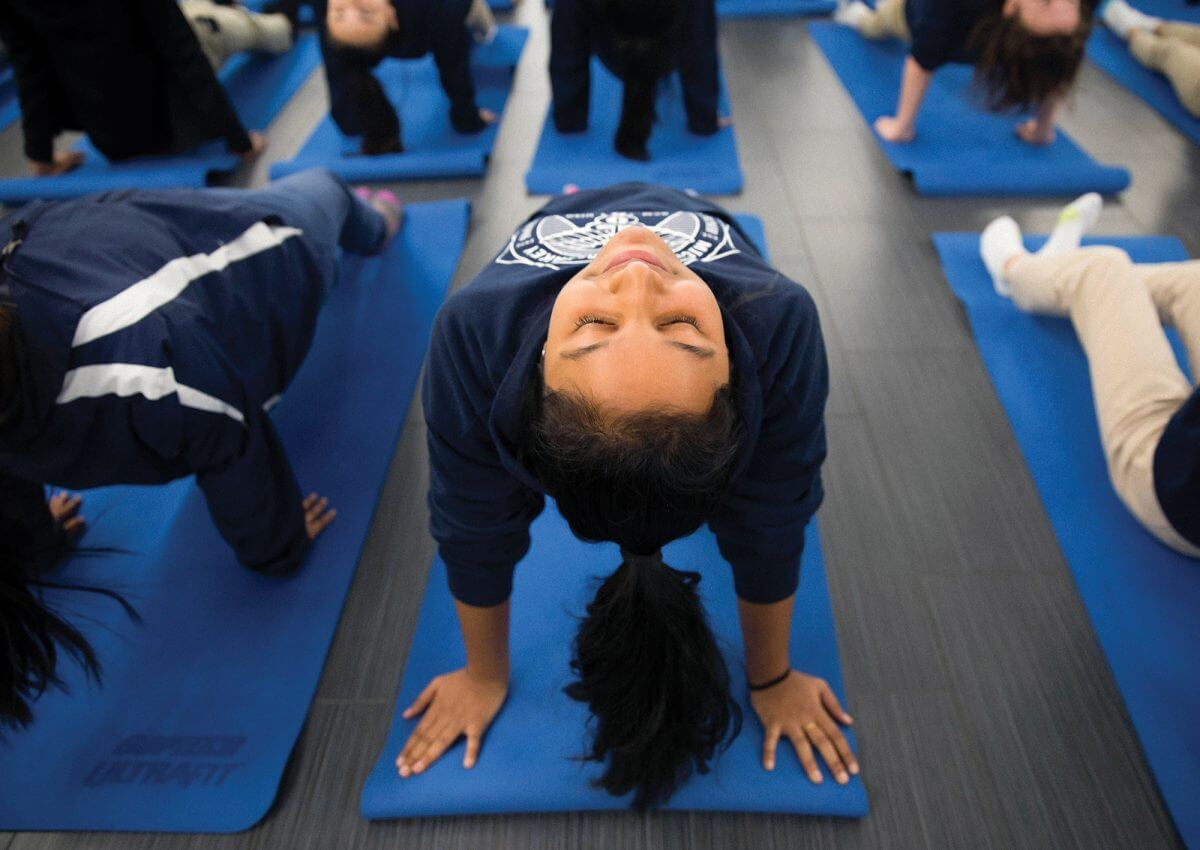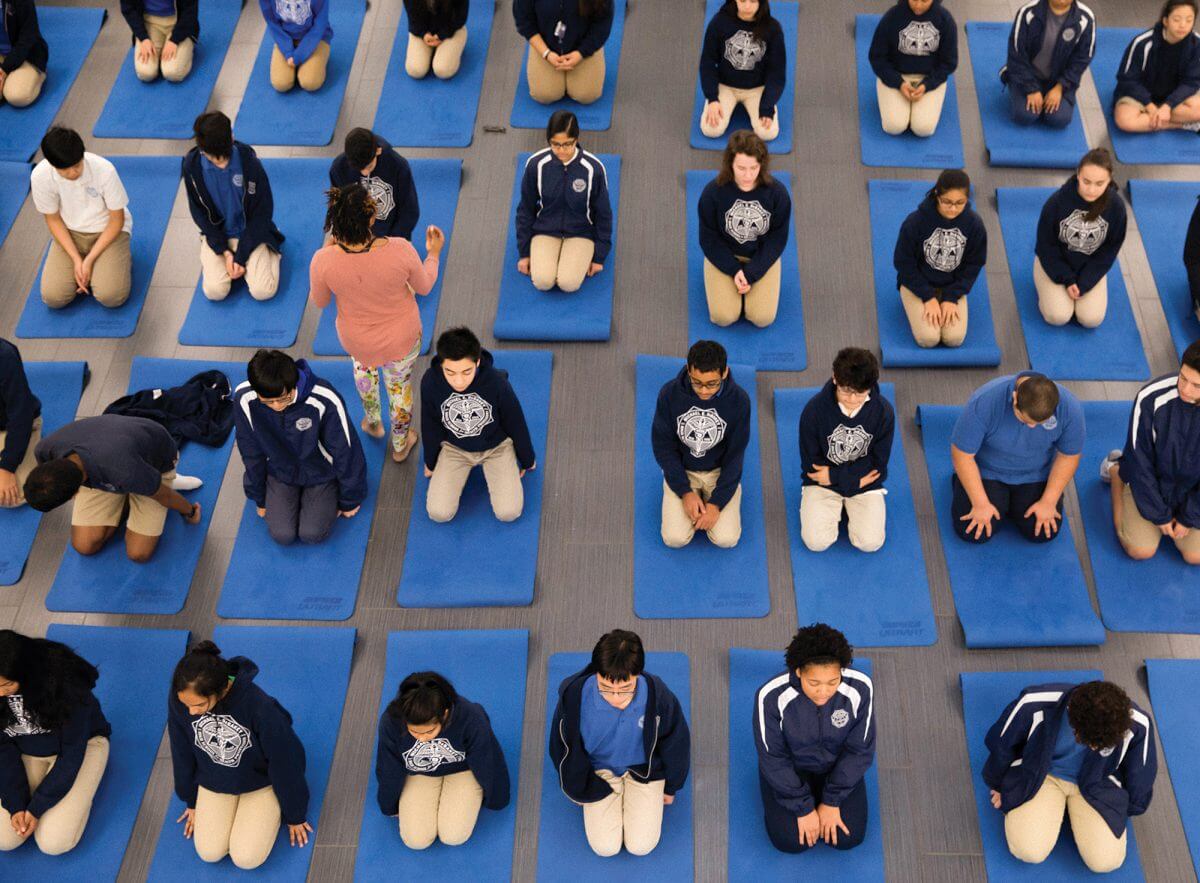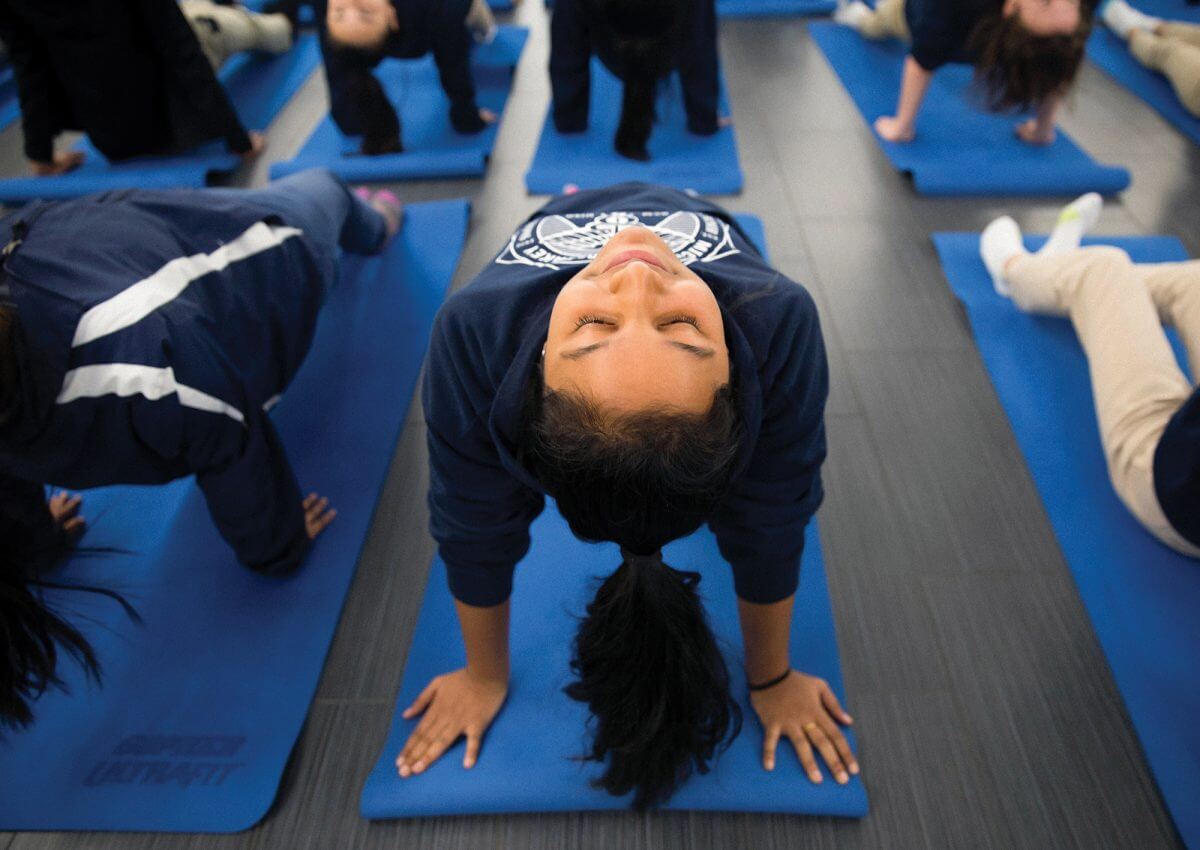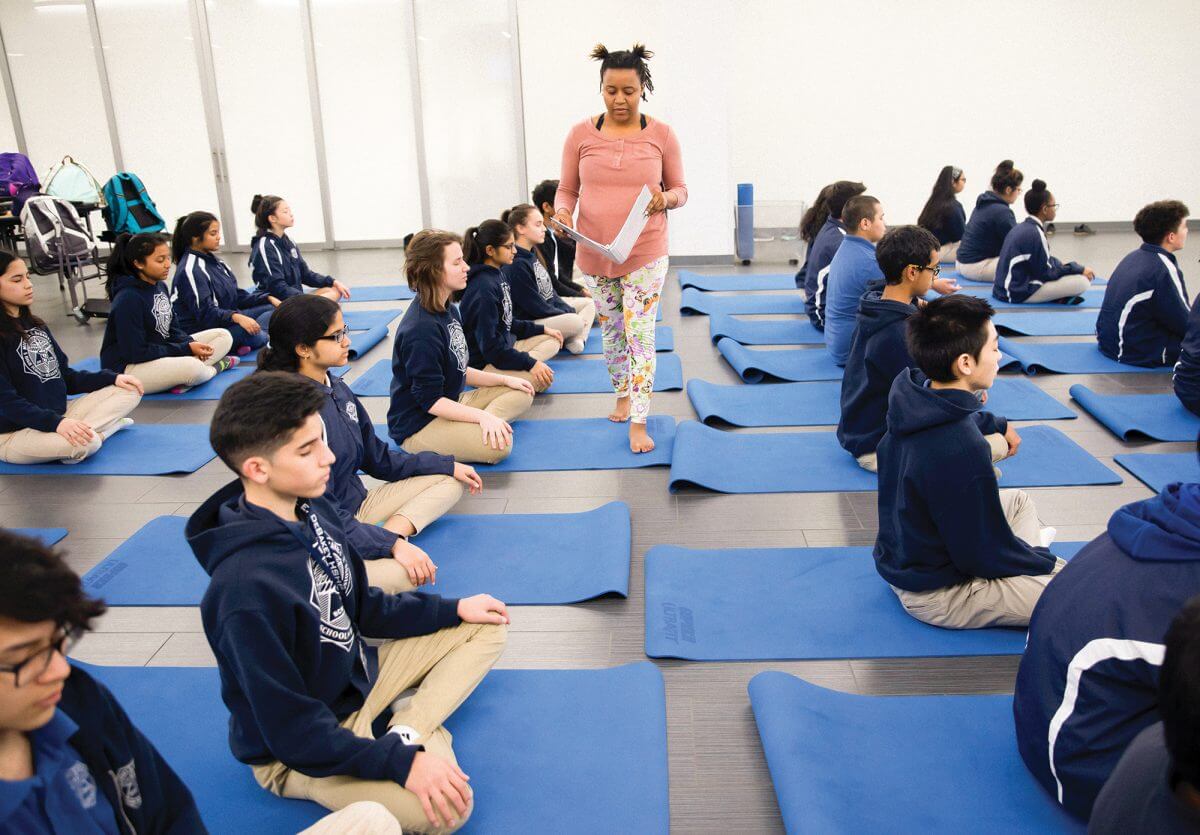De-Stressing in School

Just breathe. In and out of your belly. When you inhale, feel your belly inflate. Then exhale. Draw the breath toward your spine. Sense your belly inflating, then deflating. Just like a balloon. This is where the breath starts.
•••••
Korin Brody spoke from memory, her voice steady and composed. The room was filled with ninth graders on yoga mats lined neatly in rows on the cafeteria floor at the Michael E. DeBakey High School for Health Professions. This was the first session of a new semester-long program designed to measure the impact yoga could have on the stress levels of students.
“Kids these days are under a lot of stress, and this may impact their mental health,” said Kirti Saxena, M.D., director of the Pediatric Bipolar Disorders Program at Texas Children’s Hospital and associate professor in the department of psychiatry and behavioral sciences at Baylor College of Medicine. “If you look at mental health disorders—anxiety, depression—many can stem from stress, and we’re hoping to intervene early enough so that we can perhaps offset some of these issues.”
The program aims to identify the early onset of mental health issues and provide psychiatric interventions, if appropriate.
A collaboration between the Institute for Spirituality and Health, Baylor College of Medicine, Texas Children’s Hospital and DeBakey High School, the program includes two yoga classes a week for 12 weeks. Approximately 40 students participate in the yoga class in addition to the physical education already included in the school curriculum; another 30 to 40 students sit out as controls, completing their physical education only. All students anonymously complete rating scale assessments at the beginning and end of the semester to measure stress, attention and sleep. Participation is voluntary and classes take place within school hours during freshmen health science classes, so it is not an additional activity for these busy and ambitious students.
The program has been approved by the Baylor College of Medicine Institutional Review Board for research.
“The idea is to imbed the practice of yoga into the school’s curriculum each semester and assess how it will reduce students’ stress and improve attention or concentration, sleep and just overall wellbeing,” Saxena explained.
Boosting student potential
Recent research suggests that mindfulness practices such as yoga are especially beneficial in school settings, as they help students manage stress and anxiety and boost their potential to focus and perform. In 2016, the Annals of the New York Academy of Sciences published a collective review of research specifically focused on yoga in schools and found that yoga “is a viable and potentially efficacious strategy for improving child and adolescent health and therefore worthy of continued research,” with students reporting less stress as well as improvements in mood and emotion-regulation.
“Learning a practice and a skill like yoga will stay with you wherever you go, throughout high school and college and the rest of your career and life,” Saxena said. “That’s going to help you with everything you’re doing—academics, relationships, sports. Even more, you’re teaching them this skill at an important time in their development; they’re still under that protective umbrella of school and faculty.”
Students are encouraged to practice what they’ve learned at home and to reflect on how the poses, breathing and meditation techniques make them feel.
“There’s a lot of emphasis put on the breathing, because the fastest way to calm the mind is through the breath. If you have an even breath, you can have an even mind,” said Lex Gillan, who certifies yoga teachers and is part of the faculty at the Institute for Spirituality and Health. Gillan tailored the syllabus for the course specifically for DeBakey. “The real emphasis is to quiet these kids down and let them focus.”
Despite some initial skepticism, students participating in the program have embraced the opportunity to be quiet and still, and they’ve already noticed a change in how they react to their demanding academic curriculum.
“Right after yoga, I go to homeroom, but then I go to biology class. And for me, biology is a little bit hard to manage, so I’m always stressed about that,” said Karishma Varghese, one of the students enrolled in the program. “When I come to yoga, the instructors create this very relaxed, soft atmosphere. I’m always around my peers, so I also get that relaxed sense. And then while you’re doing the yoga, you’re focused on stretching out the muscles, really feeling your strength, and you’re not so focused on what’s going on in the mind, like, ‘Oh, what do I have next? What’s the next assignment?’”
The classes are taught by six different yoga teachers. Everyone involved in the program volunteers their time, including both Gillan and Saxena.
“We really believe this is going to be helpful,” Saxena said. “It’s a way of creating awareness about what tools and skills are out there to help with stress. The hope is, if students continue to practice yoga, they’re going to feel a difference—they’re going to begin to see that their very busy day goes very smoothly. The stress will still be there, the tests and the projects will still be there, but the energy behind all of it will be a calming energy. We hope they get to experience that.”
Saxena and Gillan hope to collect the data from the student rating scales and present their findings to educators and the medical community to help contribute to the growing field of research focused on yoga in schools. Because one of their primary aims is to identify how the assessments and yoga intervention impact early recognition of mental health problems in students, Saxena plans to provide psychiatric consultations at her mood disorders clinic at Texas Children’s Hospital to students in need.
“Practice helps demonstrate how scattered our minds are,” Brody said evenly, as she wrapped up the students’ very first session.
•••••
Sit nice and tall while you’re lifting the waist and the hips and the ribcage. Your head is nice and straight and relaxed. Your eyes are soft, the shoulders are loose, your belly is full. Complete the breath.







